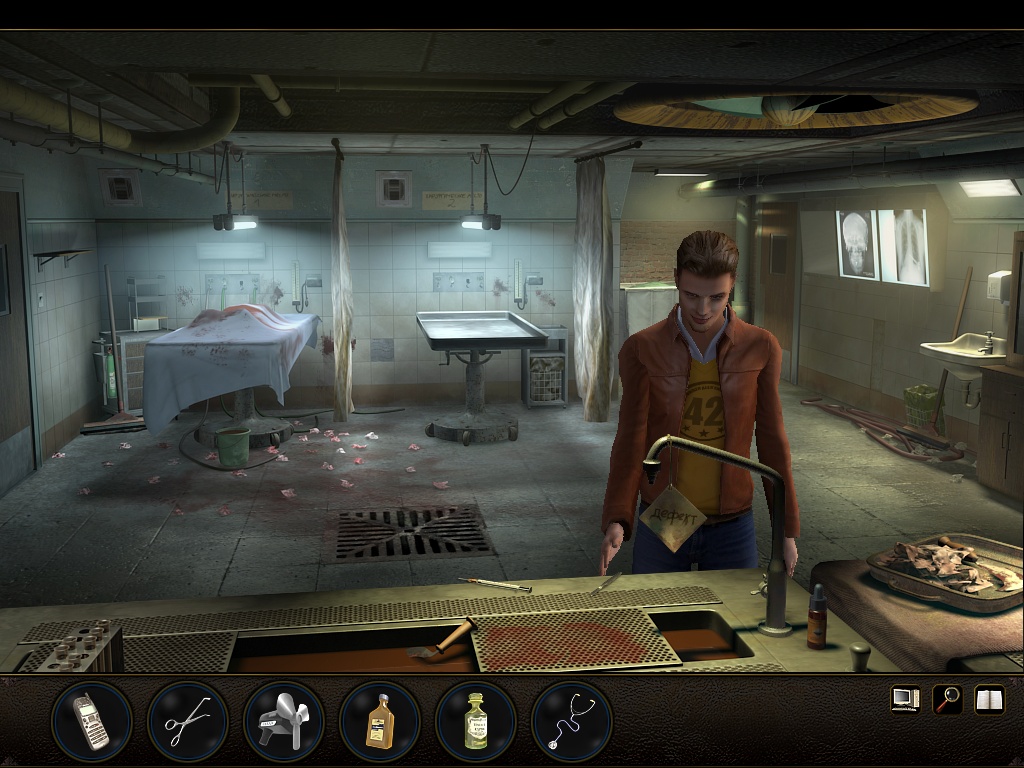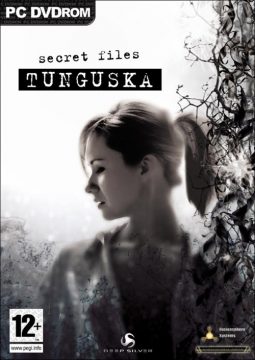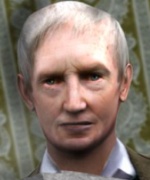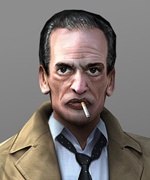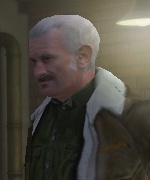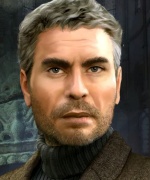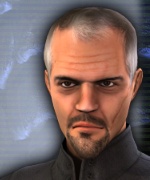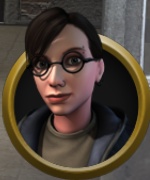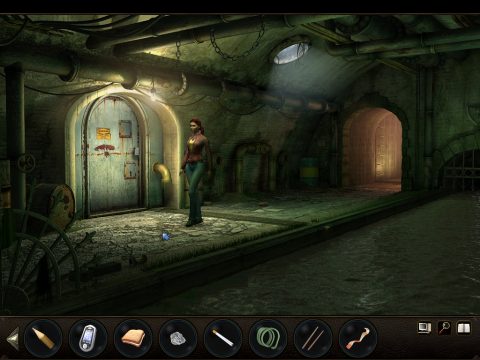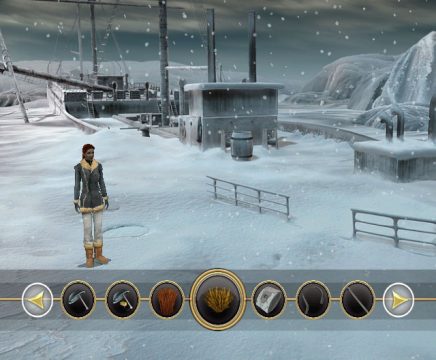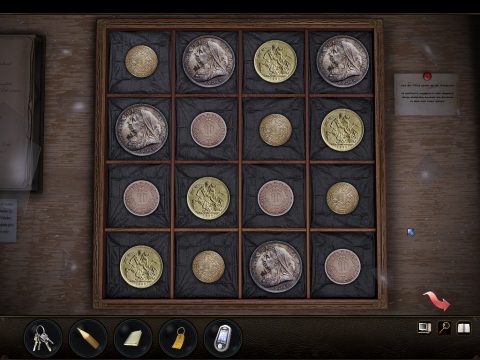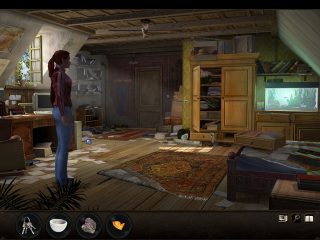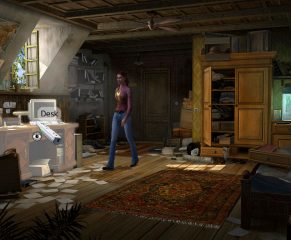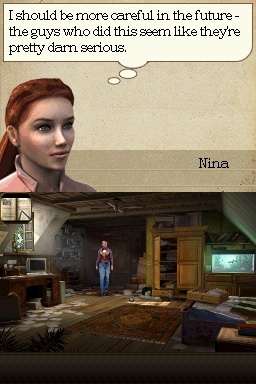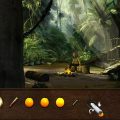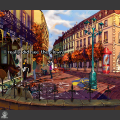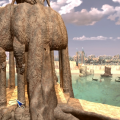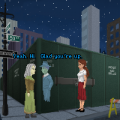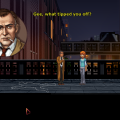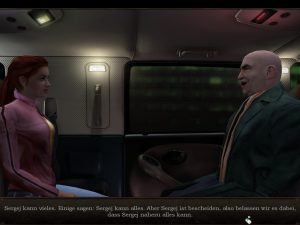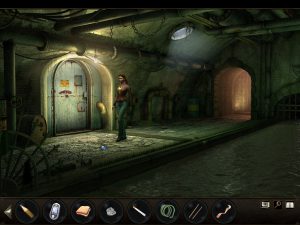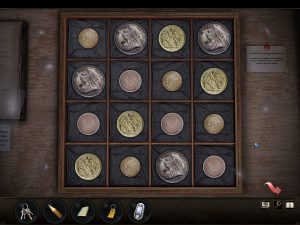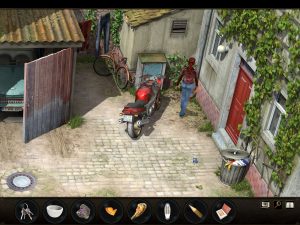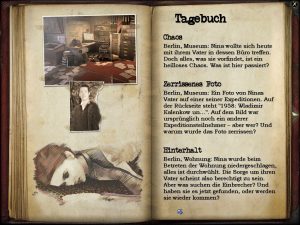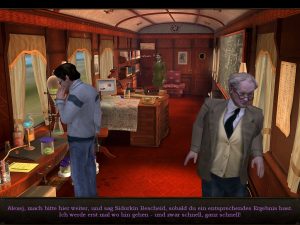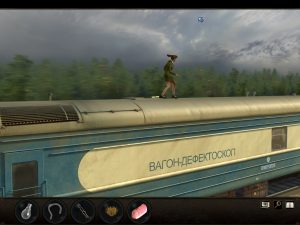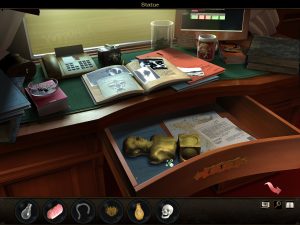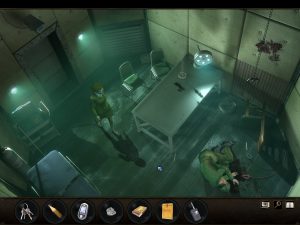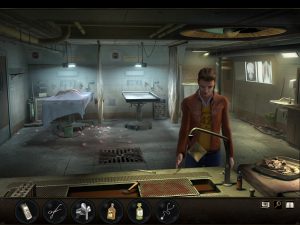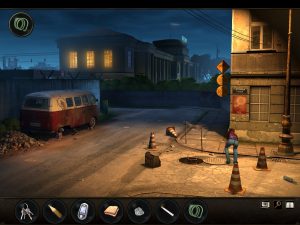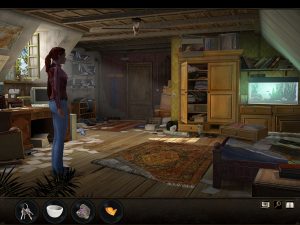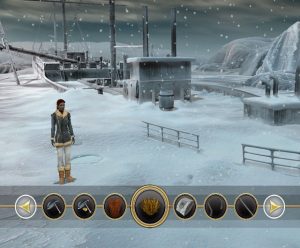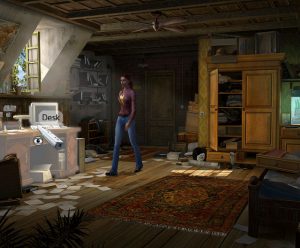- Secret Files: Tunguska
- Secret Files 2: Puritas Cordis
- Secret Files 3
Adventure games may have died in North America around the turn of the century, but they continued to have a healthy life in Europe. In fact, adventures may nowadays be the third pillar of PC gaming right behind MMORPGs and strategy simulations over there, and every year a number of big name releases from Germany, France and the Czech Republic guarantee that adventure game fans never run short of puzzles to solve. It is often argued that titles who even come close to the greatness of a Monkey Island or Gabriel Knight are few and far between. Actually, the same was true in the ’90s for games not made by LucasArts or Sierra, and both just happened to stop investing in the business around the same time. Imagine Marvel and DC Comics abandoning the superhero comic market all of a sudden.
One of the games that stood out as exceptionally good and became a true classic praised next to the genre giants wasBroken Sword by the British company Revolution Software. The mystery thriller won the hearts of adventure game fans and casual gamers alike, not only through its many solid gold puzzles, but also an enthralling plot that took the best of both Gabriel Knight and Indiana Jones.
It only seems fitting that one of the series that come closest to the good old times – other than Telltale Games’ decent episodic LucasArts sequels – is so deeply in love with Broken Sword. It seems almost as if the guys at Animation Arts and Fusionsphere Systems wondered what it would be like if Broken Sword didn’t jump the shark with the third game and become a 3D Sokoban clone with stealth elements. Secret Files relies on the same proven ingredients as its big role model: Wise cracking protagonists that constantly stumble into big mysteries and conspiracies and travel between interesting locations all around the world. But can it manage to hold up to its great ancestor?
Characters
Nina Kalenkow
The sassy main protagonist of the series. She moved from Russia to Germany with her father at a very young age. Not much is known about what she does when she isn’t out to save her father and/or the world, but apparently she works as a mechanic for motorcycles and seems to have played almost every adventure game from the ’90s.
Max Gruber
An assistant in the museum where Nina’s father works. He helps her on the search for her father and the two become a couple.
Wladimir Kalenkow
Nina’s father. He used to be a scientist for the government in the Soviet Union. More recently he’s working as a curator in the local museum, but now his past is coming back at him.
Kanski
A dubious detective that shows up at the museum shortly after Wladimir Kalenkow’s disappearance. Despite being killed off in Tunguska, he makes a… strange reappearance in the second game. He is modeled after the likeness of the late Klaus Kinski and in the original German version voiced by the famous voice actor Ekkehart Belle, known as the German voice of Kevin Sorbo in the Hercules series, among many other roles.
Oleg Kamburski
A former colleague of Wladimir. When Nina contacts him in search for her father he first is reluctant to even speak to her, but soon changes his mind and comes back to aid her.
David Korell
A theologist with an identity crisis, who travels with the same cruise ship as Nina in Secret Files 2. Both escape a terrorist attack together and he becomes a valuable ally for the theological nature of the mystery.
Pat Shelton
While the villain in the first Secret Files makes himself scarce until the very end, the lunatic leader of the Puritas Cordis sect acts much less subtle and even broadcasts advertisements with a pirate TV station.
Emre
A colleague of Max who digs around at the… digging site in Turkey in Secret Files 3. Is killed off after one minute of screen time, although the ending suggests that he actually survived that bullet to the head.
Kassandra
A Mary Sue super hacker girl and math genius in Secret Files 3. Is done away with after one minute of screen time but may save the day by launching a hacking attack at the villains.
Jane Cunningham
Jane is supposed to be the big bad in Secret Files 3, although the game forgets to properly introduce her. She still gets more of a spotlight than her buddy Nis van Rijn, as she stays on screen for more than a minute and actually even is playable – for less than a minute.
Secret Files: Tunguska betrays its plot already in the title, at least to The X-Files veterans and suckers for unsolved phenomena. On June 30th, 1908, a region near the Podkamennaya Tunguska River was shattered by a huge and devastating explosion, said to make the Hiroshima bomb seem like a firecracker in comparison. Reportedly, the sky was illuminated in all of Europe for an entire night. Fast forward a little less than a century later. Nina Kalenkov comes to visit her father at his workplace at a museum, but all she finds in his office is a huge mess. The authorities show little concern about the assumed disappearence of Vladimir Kalenkov, but Nina finds help in form of a young assistant curator named Max. Together they soon discover that all hints point to Nina’s father’s former research on the Tunguska event in service of the Soviet Union. Soon they find themselves in the firing line of Russian intelligence agencies while they travel – of course – all around the world in search for clues to Vladimir’s whereabouts and his past research project. But how does this involve the mysterious group of people in black robes that seem to show up everywhere?
Tunguska‘s basic controls are exactly that: basic. A left click triggers interaction with any object or person, while a right click is for observation. Nina’s walking speed is rather slow, but thankfully the next room can be usually accessed instantly by double clicking on an exit. Items can be used and combined like in any other point-and-click adventure, so there are no surprises here. The novelty of the control system lies with its options to aid the player in times of cluelessness. One of Secret Files‘ big advertisement points was the “Snoop Key” feature. Pressing the space key will mark every hotspot on screen with a magnifier icon, sparing the player an elongated pixel hunt. Purists may dismiss the feature, after all searching for the right objects to interact with can be part of the fun in an adventure game. Detailed high resolution background nowadays tend to make that search a major pain, though, and Secret Files would annoy as well with some nearly invisible items if it weren’t for the Snoop Key.
Matters are further simplified by the fact that those items that can be combined with each other are recognizable as such from the beginning. So after selecting one of the items in the inventory one just needs to hover over the bar to see immediately which combinations are possible. On one hand, that saves the player a lot of tedious experimenting when stuck, but also seems a bit lazy on the writer’s part. In truly great adventure classics, making the characters comment on stupid actions can be almost as satisfying as progressing, after all. Equally streamlined are the dialogues. There are hardly ever more than three or four topics to choose from during the course of an entire conversation, with very few “useless” lines. In case one misses or forgets any details, important findings are recorded in a journal, which oddly is written in the third person, despite being designed like an actual personal journal. The journal has also an additional hint system built in, but it doesn’t work as well as the other features.
But now to the essence of any adventure game. Its puzzles are where the game really takes one back to the good old days. The vast majority are based around item combination, with only very rare logic puzzles thrown in for a change. Nina and Max cannot die, and while some scenes are staged to mediate a sense of urgency, there’s never any time limit to your actions. Most challenges are designed better-than-average, and especially later in the game some will get a lot of heads smoking. There are no nonsensical puzzles, but make sure to take along a good portion of ye good olde adventure logic, or you’ll never get ideas like taping your cell phone onto a cat to abuse her as a mobile wiretap.
If the puzzles are the meat, the writing serves as the flavoring in the art of adventure game cuisine. And this is sadly the point where most recent attempts fall short. Secret Files: Tunguska has its issues in that department, too, but it’s not a total failure. The two heroes, especially Nina, are written as a pair of loudmouths and smartasses, and the writers felt obligated to make them comment on everything with a clever, funny observation. The humor in these lines is pretty hit-and-miss, and loaded with pop culture references. Max and Nina are noticeably genre-savvy, not only for adventure games, but also mystery and spy thrillers. This makes for some rather nerdy comedy, which could have used a little more subtlety regarding its references. The main plot itself, however, is written consistently well and the mystery case is genuinely intriguing until right before the end, when it pulls an Indiana Jones and an X-Files at the same time and becomes almost stupefyingly insane. A patch for the game (which was included in the English retail version) vastly extends the ending, but did little to make it make sense. The low point of the writing is definitely the “romance” between Max and Nina, though. It just comes out of nowhere after ten lines of dialogue between the two and feels wildly misplaced. Here the writers definitely should have taken more time to actually develop their relationship.
Even the best writing (which Secret Files doesn’t have) can only do so much when the voice acting is bad. The German dub is pretty solid with its main characters, with only the minor roles being a bit of a letdown. The English voiceover is an entirely different beast, though. The voice of an annoying Yankee brat just doesn’t cut it for the educated daughter of a Russian-German immigrant, nor does the apathetic voice of Max help anyone get excited over the plot. Despite the many, mostly European locations visited, there’s a total lack of accent variations, and everyone just sounds neutrally American, even the Irish (given, a similar problem exists with the German version as well).
If anything, Secret Files sure looks good for an adventure game. The 2D backgrounds are full of little details, and the character models fit in quite well, as long as they don’t get too close to the camera and reveal their low polygon count. More care has been taken for the protagonists to make them look attractive at any angle. Some key events are shown in short prerendered clips in which the characters look slightly better than the main game, but not to an extend where it disturbs a consistent overall impression.
So while Animation Arts and Fusionsphere System didn’t create a new paragon of adventure games, Secret Files is still better than most of its kind in its age. It was vastly successful in Germany and at least reasonably so in the rest of Europe, enough to secure a sequel and a porting to the two “adventure game consoles,” the Wii and DS. Both are identical in terms of content, but of course compromises were made on the technical side.
The Wii version runs in a lower resolution, but still looks mostly similar to the original. It offers 4:3 and widescreen modes, the former resulting in cropped backgrounds that require scrolling even when they fit on one screen on the PC. Additionally, Nina can be controlled directly with the Nunchuk. Backgrounds on the DS look surprisingly good, but the characters are hardly recognizable. Instead, their faces are displayed as still images on the upper screen during dialogues. As there’s no right clicking with the stylus, the desired action has to be selected with an extra click. The biggest difference in the portable version, though, is the lack of voiceover. At least with the English version, this isn’t too big a loss.
Screenshot Comparisons
